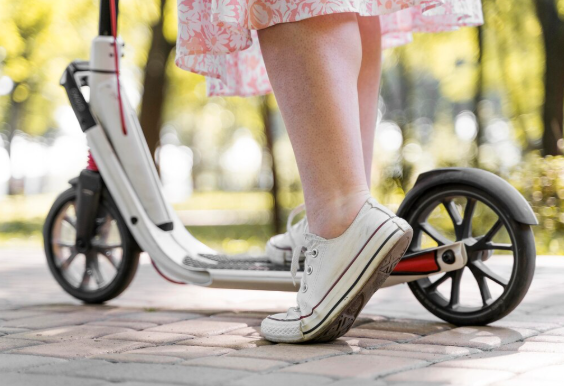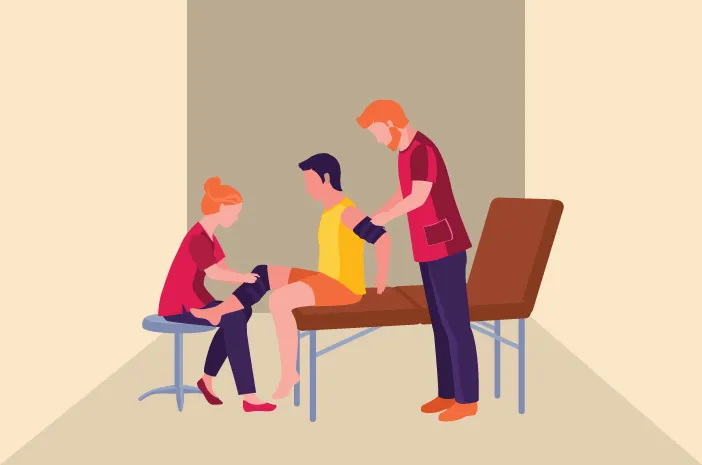How Knee Scooters Make Injury Recovery Easier and Faster

Recovering from a foot, ankle, or lower leg injury can be challenging, especially when mobility is limited. Traditional crutches can be uncomfortable, tiring, and cumbersome, making daily tasks a struggle. This is where knee scooters come in as a practical alternative. Designed to support your injured leg while allowing you to move around safely and comfortably, knee scooters are transforming the recovery process for countless individuals. This article explores how knee scooters make injury recovery easier, faster, and more enjoyable.
What Is a Knee Scooter?
A knee scooter, also known as a knee walker, is a mobility aid that allows you to rest your injured leg on a padded platform while propelling yourself forward with your healthy leg. Unlike crutches, which require arm strength and balance, knee scooters provide a stable and comfortable platform for movement. They come with handlebars, steering mechanisms, and often include storage baskets or trays for carrying personal items. Knee scooters are ideal for non-weight-bearing injuries such as fractures, sprains, surgeries, or severe bruises in the lower leg or foot.
How Does a Knee Scooter Improve Mobility?
One of the biggest challenges during injury recovery is moving safely without aggravating the injury. Knee scooters address this challenge in several ways:
-
Reduced Physical Strain: With crutches, your arms, shoulders, and wrists bear most of the weight, leading to fatigue and soreness. A knee scooter shifts the weight off your upper body, making movement more comfortable.
-
Stability and Balance: The four-wheeled design provides a stable platform, reducing the risk of falls or further injury. Users can navigate indoors and outdoors with confidence.
-
Speed and Efficiency: Knee scooters allow for faster movement compared to crutches, enabling you to complete daily tasks more quickly and with less effort.
Can Knee Scooters Help Speed Up Recovery?
While knee scooters do not heal injuries directly, they indirectly support faster recovery by minimizing complications:
-
Reduced Swelling and Pressure: Properly positioning the injured leg on a knee scooter helps maintain elevation, which can reduce swelling.
-
Decreased Fatigue: Less physical strain means your body can focus energy on healing rather than compensating for inefficient movement.
-
Increased Activity: With a knee scooter, you can move more frequently and comfortably, promoting circulation and preventing stiffness, which are essential for healing.
Who Can Benefit Most From a Knee Scooter?
Knee scooters are suitable for anyone with a non-weight-bearing lower leg injury, but they are especially beneficial for:
-
Adults Recovering from Surgery or Fractures: Provides stability and allows independent mobility.
-
Seniors: Reduces the risk of falls and strain on the upper body.
-
Athletes or Active Individuals: Allows mobility without completely sacrificing daily activities.
-
Caregivers and Families: Reduces the effort needed to assist someone with crutches or a wheelchair.
How Do You Choose the Right Knee Scooter?
Selecting the right knee scooter involves considering a few important factors:
-
Weight Capacity: Ensure the scooter can safely support your weight and any additional items you may carry.
-
Adjustability: Look for adjustable handlebars and knee platforms to match your height and comfort level.
-
Wheel Type: Standard wheels are suitable for indoor use, while larger or all-terrain wheels are better for outdoor use.
-
Braking System: Reliable brakes are essential for safety, especially when navigating slopes or uneven surfaces.
-
Portability: If you need to transport the scooter, consider models that fold easily for car storage.
Can Knee Scooters Be Used Indoors and Outdoors?
Yes. Knee scooters are versatile mobility aids suitable for both indoor and outdoor environments. Standard models are ideal for smooth surfaces like tile or hardwood floors, while models with larger wheels or pneumatic tires can handle sidewalks, grass, and uneven terrain. When using a knee scooter outdoors, always check for obstacles and uneven surfaces to avoid tipping or accidents.
For individuals seeking high-quality knee scooters, providers like Affinity Home Medical offer a wide range of options. They specialize in home medical equipment and mobility aids, including knee scooters designed for comfort, stability, and portability. Affinity Home Medical also provides medical supply rental services, repair support, and helpful accessories,
Are Knee Scooters Comfortable to Use?
Comfort is one of the main reasons knee scooters are preferred over crutches. Features contributing to comfort include:
-
Padded Knee Platform: Reduces pressure on the leg during extended use.
-
Ergonomic Handlebars: Improves grip and reduces wrist strain.
-
Adjustable Height: Allows proper posture and alignment to prevent back pain.
-
Accessories: Many models include baskets or trays for carrying personal items, making it easier to complete tasks without bending or twisting.
How Do You Maintain a Knee Scooter?
Maintaining a knee scooter ensures it remains safe and functional throughout your recovery:
-
Regular Cleaning: Wipe down frames and wheels to remove dirt and debris.
-
Inspect Moving Parts: Check brakes, wheels, and steering mechanisms periodically.
-
Lubrication: Apply lubricant to wheel bearings if needed for smooth operation.
-
Storage: Keep the scooter indoors when not in use to prevent rust or damage.
Frequently Asked Questions (FAQs)
Q1: Can a knee scooter replace crutches completely?
For non-weight-bearing injuries, yes. Knee scooters provide better stability, comfort, and mobility compared to crutches. However, crutches may still be useful in tight spaces or stairs.
Q2: Are knee scooters suitable for long-term use?
Yes, as long as the scooter is adjusted properly and used according to the manufacturer’s instructions. Prolonged use is generally safe, especially during the recovery period.
Q3: Can children use knee scooters?
Yes. Pediatric models are available that are smaller and adjustable to fit a child’s height and weight.
Q4: How fast can I move on a knee scooter?
Movement speed depends on the user’s comfort and the surface. Most people can move at a moderate walking pace, which is faster than crutches.
Q5: Can I travel with a knee scooter?
Absolutely. Many models fold easily and can fit in car trunks, making them convenient for travel or outings during recovery.
Conclusion
Knee scooters provide a comfortable, safe, and efficient way to maintain mobility during recovery from foot, ankle, or lower leg injuries. They reduce physical strain, enhance stability, and allow users to move more freely, which can indirectly support faster recovery. Whether used indoors, outdoors, or for travel, knee scooters offer a significant improvement over traditional crutches. By selecting the right model and using it correctly, you can make your injury recovery period much easier, safer, and more manageable.






